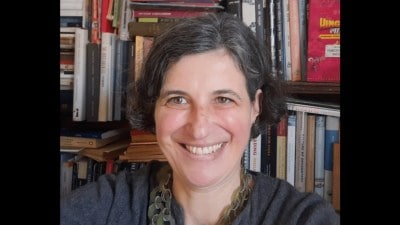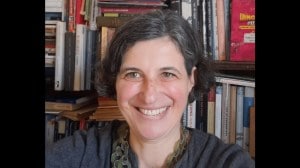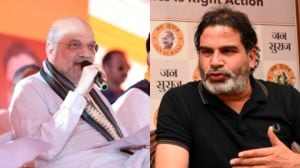Mandal modified
They may have slowed down,and they dont cause as much friction as they used to in the politically unsteady 90s,but the wheels of Mandal...
They may have slowed down,and they dont cause as much friction as they used to in the politically unsteady 90s,but the wheels of Mandal havent stopped turning. Not in Nitish Kumars Bihar,where according to the prevailing political shorthand,the subject has turned from caste to development. Not even among the Dalits,widely acknowledged to be the most uniformly deprived section of society.
In Bihar,the month of August will see the government step up implementation of a 21-point programme for a newly-minted group of sub-castes,the Mahadalits,the most marginalised among Dalits. The governments Mahadalit agenda became the subject of political controversy most recently because of the street agitation worked up by Ram Vilas Paswans Lok Janshakti Party (LJP). Paswan,who gets a significant section of the states fragmented Dalit vote and whose party performed poorly in the recent Lok Sabha polls,alleges that the Nitish governments decision to carve out the new category is driven by votebank politics and will divide the Dalits.
Does state imprimatur on the Mahadalit category reflect the urgency to ensure that development schemes reach the most marginalised of the marginalised? Or is it part of Nitish Kumars perceived attempt to firm up a support base by mobilising lower sections of social groups in the state?
Ever since his victory in the 2005 Assembly polls,the Bihar Chief Minister has made concerted efforts to address the Extremely Backward Castes (EBCs) among Other Backward Castes (OBCs),backward or pasmanda Muslims among Muslims,and women. Could the wooing of Mahadalits among Dalits be part of a pattern?
At first glance,the controversy appears to be terribly unfortunate,if not hugely misplaced. Dalits are the most disadvantaged groups in our society and Bihars Dalits,about 15.7 per cent of the states population,are especially so. According to the 2001 census,the overall literacy rate of SCs in Bihar is 28.5 per cent,nearly half of that recorded for SCs at the national level,54.7 per cent. About 93.3 per cent of Bihars Dalits live in rural areas. Any attempt by the government to uplift even some of these groups can hardly be seen as controversial.
In fact,Paswan himself seems to recognise the limits of oppositional politics on the issue. There is a curious note of defensiveness to his political agitation: I am not against measures for uplift of Dalits or Mahadalits, he explains. I am only saying that the attempt to separate Mahadalits from Dalits is unconstitutional. In the long term,it is an attempt to curtail the rights of other Dalits.
Jagdananda Singh,senior leader of the RJD,which fought the LS polls in alliance with the LJP,is even more circumspect: Paswan is right. It is a potentially divisive move. But why should we involve all Dalits in the controversy? While the RJD worries about those who are left out,we dont want to stop the Nitish government from working for those they have identified as Mahadalit.
By all accounts,the LJP and RJD are moving cautiously. But there are two charges against Nitishs Mahadalit agenda: one,it is unconstitutional and two,it is divisive.
On the first count,KP Ramaiah,secretary of the Mahadalit Commission set up by the Bihar government in 2007 to identify the Mahadalits and suggest measures to integrate them in the mainstream,points out that the new category is only meant for better targeting of development schemes for Dalits,and has no implications for the SC lists for availing of the constitutional provisions of reservation. We have not exceeded our brief, says Ramaiah. There is no attempt to tamper with the SC list for reservations, underlines Babban Rawat,Ramaiahs colleague in the commission. But the second charge of divisiveness is a pointer to the fact that the criteria for inclusion in the Mahadalit list have been controversial.
According to Ramaiah,there were three criteria of inclusion: literacy rates,placement in services and social stigma. Initially,the Mahadalit Commission identified 18 of Bihars 22 Dalit sub-castes as Mahadalit. That is,all groups were renamed,except four. These were Jatavs and Paswans,the two most numerically dominant groups,together accounting for more than 60 per cent of Bihars SC population; and Dhobis and Pasis,the two groups considered to be relatively better off in terms of development parameters among Dalits.
But later,the commission recommended the inclusion of the Dhobis and Pasis in the Mahadalit list as well. We got 100-150 representations from both groups. The Commission studied their condition through surveys and interviews,and included these groups a year later, says Ramaiah. Now all of Bihars Dalit castes have been renamed Mahadalit,except for the Paswans and Jatavs.
The dissonance has not been missed: Dhobis and Pasis,now included in the Mahadalit category,are relatively better off on most development parameters than the Paswans and Jatavs,who have been kept out. According to the 2001 census,Dhobis have the highest overall literacy as well as female literacy rates,followed by Pasis,Paswans and Jatavs. Dhobis have the highest number of matriculates,the highest share of schoolgoing children and graduates among Bihars Dalits.
In the end,however,the question is not just whether the Paswans and Jatavs have been kept out for political reasons Paswans are seen as the LJPs votebank and Jatavs have been traditional supporters of the Congress and BSP. It is this: As it addresses Bihars most disprivileged sections,can the Nitish government that has brought in several welcome departures from the past,find the language to reassure the people that it is not deepening identity politics that has afflicted the state?



- 01
- 02
- 03
- 04
- 05




























